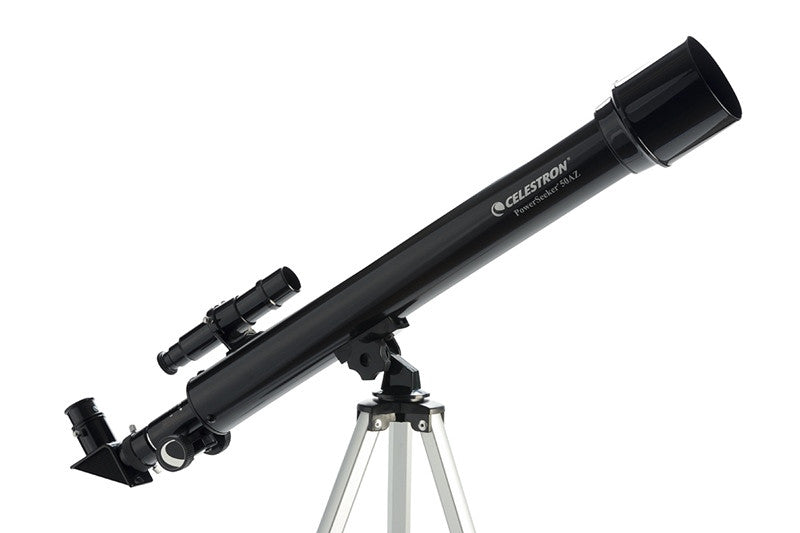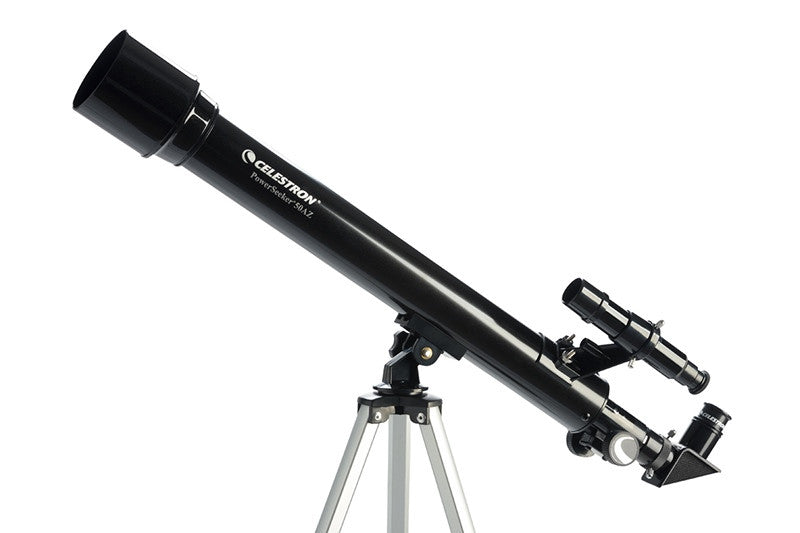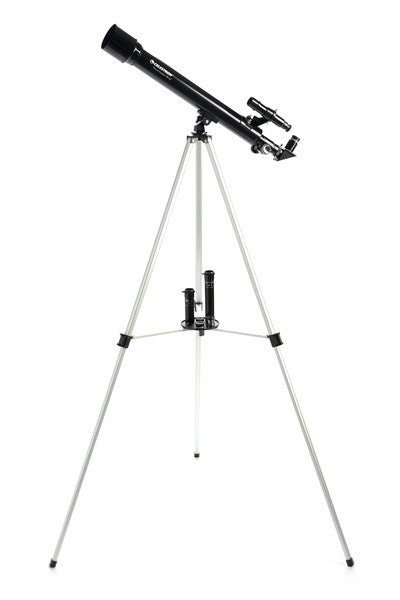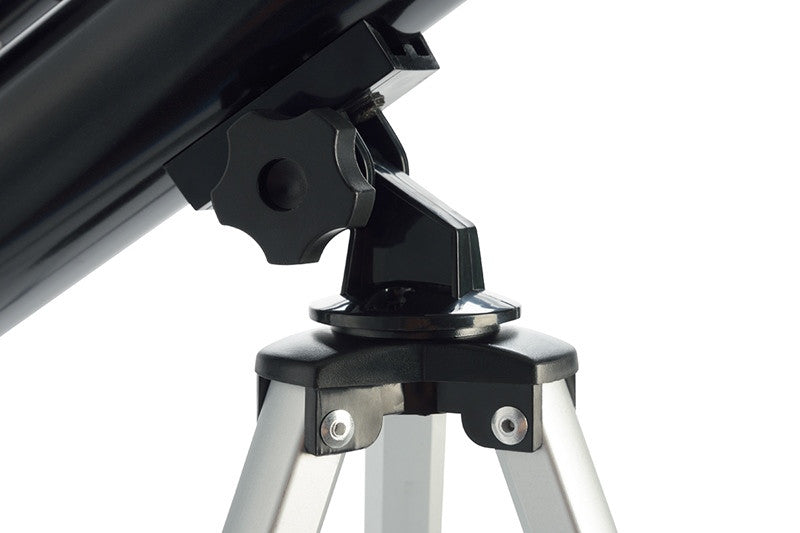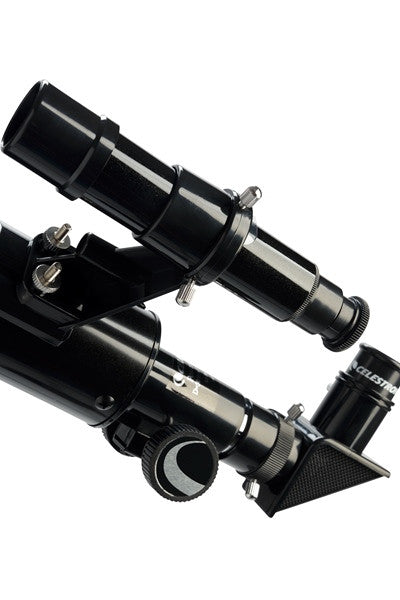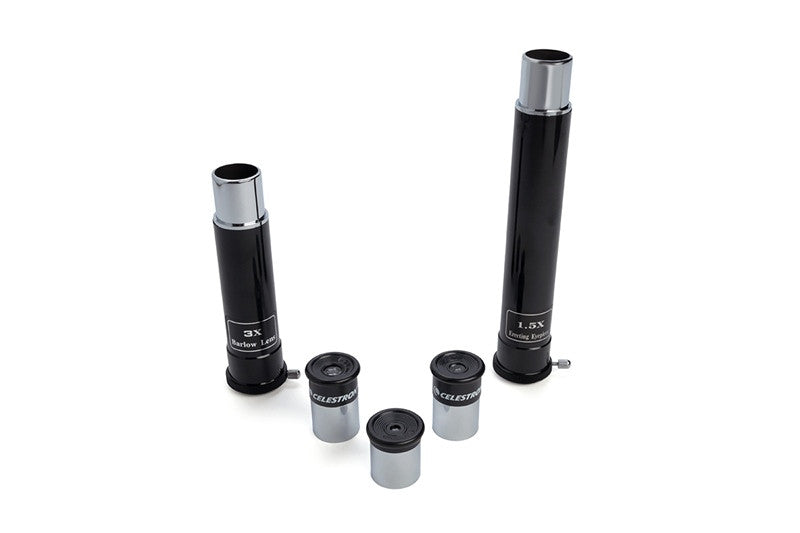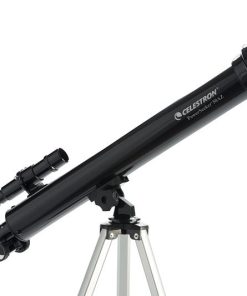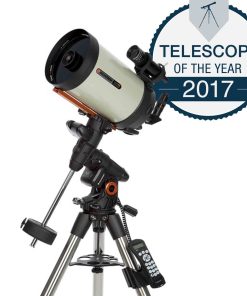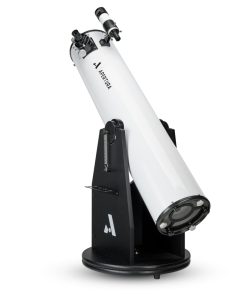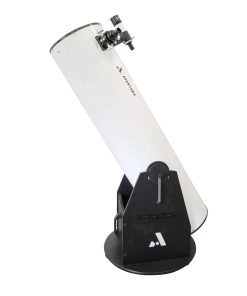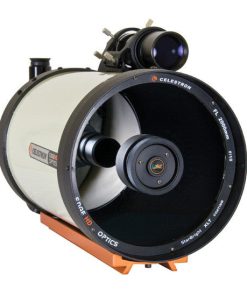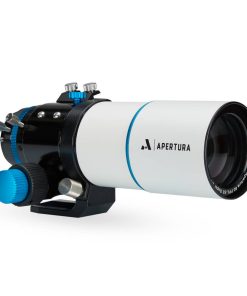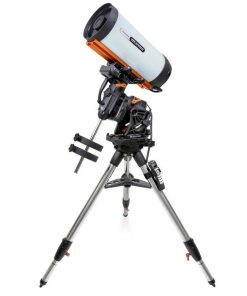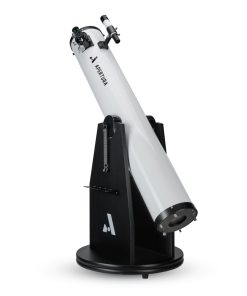Celestron PowerSeeker 50AZ Refractor Telescope – 21039 Celestron
$ 54,95 $ 27,48
The Celestron PowerSeeker 50AZ is a great entry level telescope for adults, teens, and children. The 50mm front objective lens gathers enough light to show you the Moon, Saturn, Jupiter, Mars, and several bright deep-sky objects as well as visitors to our solar system, such as comets. The Celestron PowerSeeker 50AZ is quick and easy to set up, and weighs under two pounds. An aluminum tripod puts the telescope at a comfortable height for most people, and an included 5×24 finderscope, once properly aligned, will help you find objects faster.
See objects in low, medium and high magnifications with included eyepieces
Unlike the fixed magnification of most binoculars or spotting scopes, this 50mm telescope can see objects at different magnifications by simply changing the eyepiece. The Celestron PowerSeeker 50AZ telescope comes with three eyepieces for low, medium, and high power views. Additionally, Celestron has included a 3X Barlow lens, allowing you to double the magnification of any like-sized eyepiece you use with it. So, instead of just one or two magnification choices, you will have a total of six.
Great for celestial and terrestrial views, day or nighttime
The Celestron PowerSeeker 50AZ also makes a great terrestrial telescope. When used with the included erect image accessory, your views will be right-side up and left-to-right correct. Watch a deer as it meanders across a field, or keep track of a ship’s passage through a bay or on the open ocean. With the PowerSeeker 50AZ, you will enjoy both daytime and nighttime observing, and all for a price that won’t break the bank.
Print out star charts for your observing time and location
Another cool accessory that is included with the PowerSeeker 50AZ is a piece of software called TheSkyX – First Light Edition. This beginner’s software has a database of 10,000 astronomical objects and enhanced images of 75 of the most popular objects. What is really helpful, though, is the ability to print out a sky map for the date and time that you will be observing. This personal star chart will show you the way the stars and planets will look for your observing time, helping you to get oriented faster and make the best of the time you have at the eyepiece.
Quick Shipping and Professional Packaging
Due to our longstanding partnership with UPS FedEx DHL as well as other major international carriers, we are able to provide various shipping options. Our warehouse personnel are well trained and will be able to pack your goods in accordance with the exact and precise specifications. Your goods are thoroughly checked and securely secured prior to shipment. Everyday we deliver hundreds of packages to our customers from all over the world. Our determination to be the biggest online retailer in the world is shown by this. The warehouses are located situated in Europe in the same way as they are in the USA.
Note: Orders containing multiple items will have a separate processing period for each item.
We will carefully examine all products before they are shipped. Today, the majority of orders will be delivered within 48 hours. The delivery time will be between 3-7 working days.
Returns
We don't manage the stock at our warehouse and factory. The actual inventory may fluctuate at any time. It's possible that you may not receive your order once it's been placed.
Our policy is for 30 days. We are unable to return or exchange your purchase after 30 days since the purchase.
In order for your item to be eligible for return the item must not be opened and in the condition you received it. It must also remain in the original packaging.
Related products
Telescopes
Telescopes
Celestron 8″ Rowe-Ackermann Schmidt Astrograph with CGX Equatorial Mount – 12058 Celestron
Telescopes
Apertura 60 mm f/6 FPL-53 Doublet Refractor with Field Flattener Kit – 60EDR-KIT Apertura
